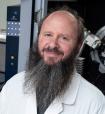

Showing 361 - 380 of 856 results


User Meeting 2024 award recipients
ANSTO and the User Meeting 2024 organising committee celebrate this years award recipients.

Fuel and spent fuel
ANSTO researchers are undertaking the fabrication and characterising advanced fuels and investigating the key properties of nuclear waste and its long-term interaction with containment materials to improve safety for short and long-term storage.

Role at ANSTO
Project to repatriate Australian radioactive waste from France
Using uranium to create order from disorder
The first demonstration of reversible symmetry lowering phase transformation with heating.
History revealed
Dingo sees through heavy corrosion to help dentify an historic firearm.

Role at ANSTO
ANSTO welcomes revitalised National Science and Research Priorities and National Science Statement
(ANSTO) has welcomed the launch of the new National Science Statement and revitalised National Science and Research Priorities by Minister for Industry and Science, The Hon Ed Husic MP and Australia’s Chief Scientist, Dr Cathy Foley AO PSM.

Role at ANSTO
Role at ANSTO

Role at ANSTO
Celebrating crystallography - New video
Producing superconductors for quantum circuit elements at high temperatures

Role at ANSTO
Early career researchers feature in Careers with Science publication
Samples - Infrared microspectroscopy
The Infrared microspectroscopy microscopes can record spectra from a range of different samples; from thin microtomed sections to polished blocks and embedded particles. This section highlights the types of samples that can be analysed using the IRM beamline
ANSTO scientist and technical specialist recognised at Users Meeting
Professor Elliot Gilbert and Dr Norman Booth have received awards from the Australian Neutron Beam Users Group at the 2021 ANSTO Users Meeting
Nuclear techniques help unlock structure
Research on a rare type of superconducting intermetallic alloy

Research Publications
ANSTO provides a list of journal, book, technical and conference publications associated with the Australian Centre for Neutron Scattering, and the Centre for Accelerator Science.